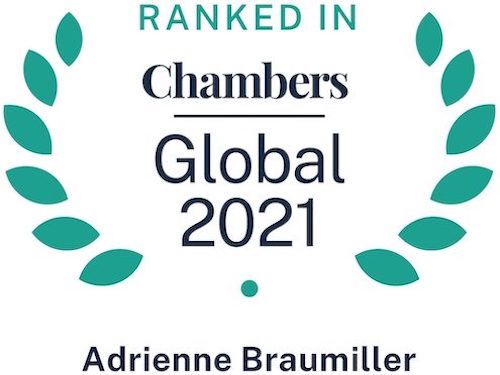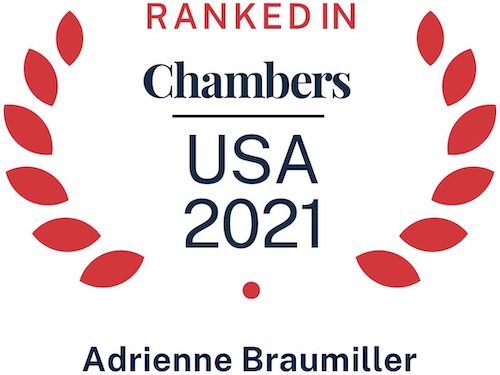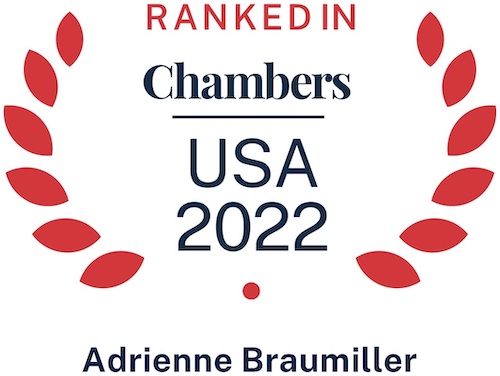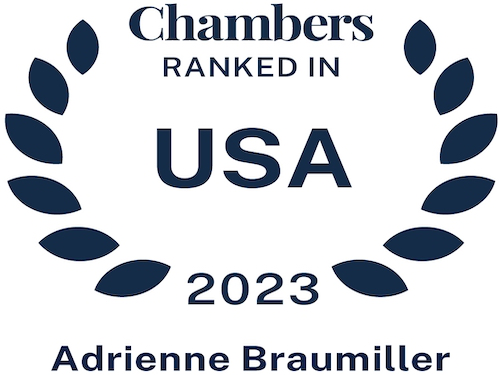The Tokenization Rulebook: Compliance Strategies for the Digital Asset Revolution
By James R. Holbein, Of Counsel, Braumiller Law Group PLLC and Justin Holbein, CEO, web3 Consulting LLC
Introduction: The Evolution of Real-World Asset Tokenization
Since Bitcoin’s creation in 2008, cryptocurrencies and traditional assets have largely existed in parallel. In our previous exploration of Real World Assets (RWAs) (Assessing the Benefits and Challenges of Tokenizing Real World Assets, February 7, 2024), we identified how the lack of reliable bridges between on-chain and off-chain ecosystems has constrained the transformative potential of blockchain technology. RWAs encompass everything from real estate and commodities to securities and other financial instruments that, when tokenized, can gain programmability, liquidity, and independent verifiability.
While early attempts during the 2017-2018 ICO boom fell short, advances in DeFi technology have created new opportunities to realize tokenization’s original vision. Current efforts span both institutional initiatives (tokenizing US treasuries, real estate portfolios) and grassroots creator economy movements (tokenizing creative work, social media content, and community brands). These parallel developments utilize similar blockchain infrastructure but serve different market needs and face different regulatory challenges.
The fundamental advantage of tokenization lies in making traditionally illiquid assets liquid through fractionalization, increasing market efficiency, and creating transparency through blockchain’s immutable ledger. Smart contracts, the underlying technology powering tokens, enable customized programming that can transform how assets are traded, valued, and utilized. Current tokenization efforts have made progress with financial products, with projects like MakerDAO experimenting with tokenized US treasuries and mortgage loans.
However, as our previous analysis highlighted, significant challenges remain. The legal and regulatory environment in the United States remains fragmented, with no comprehensive federal framework to guide tokenization efforts. This regulatory uncertainty has hindered innovation and left many aspects of tokenization in a legal gray area. The approval of spot Bitcoin and Ethereum exchange trade funds (ETFs) offer a glimpse of how regulated tokenized assets might function, but broader clarity is still needed.
Asset tokenization today operates along two complementary but distinct pathways. The first involves institutional efforts to tokenize traditional financial products and large-scale assets – from US treasuries to real estate portfolios. The second represents a grassroots movement within DeFi and the creator economy, where individual creators and smaller communities tokenize their work, intellectual property, and creative output. While both utilize similar underlying blockchain technologies, they serve different market needs and face distinct regulatory considerations. Understanding this bifurcation is crucial for developing appropriate legal frameworks that can accommodate both institutional innovation and creator empowerment.
Building on this foundation, this article examines the specific legal compliance considerations for asset tokenization, with particular attention to the Howey test’s application to crypto assets and the SEC’s evolving approach to digital asset regulation. By understanding these regulatory dynamics, projects can better navigate the complex landscape while realizing the transformative potential of tokenized real-world assets. Readers should be aware that several pieces of legislation are pending in Congress now, including the GENIUS Act which addresses regulation of stablecoins, and other draft laws to regulate the cryptocurrency markets.
Recent Developments in Asset Tokenization
The tokenization movement has reached a critical inflection point in 2025. Tokenization faces doubt from many sectors about its transformative potential, similar to many financial revolutions in history, including the dawn of ETFs in the early 2000s, which were met with similar skepticism. This skepticism didn’t prevent ETFs from transforming global investing into a market exceeding $13 trillion, and tokenization stands to offer many, if not more, transformation potentials to investors, creators, organizations, and business owners.
Tokenization offers a fundamental, transformative potential for capital markets: instantaneous settlement, full transparency, transformative liquidity in formerly static markets, and more efficient market structures across asset classes. While much of this potential remained aspirational in previous years, 2025 marks a watershed moment driven by three key developments.
Market Scale and Growth: Stablecoins (cryptocurrencies with their value pegged to a fiat currency like the US dollar or Euro) have expanded into a $210 billion market in 2025 (https://www.bastion.com/blog/the-state-of-stablecoins-March-2025 , March 20, 2025), effectively functioning as digital dollars and proving that tokenized representations of traditional assets can achieve massive scale. Building on this foundation, tokenized real-world assets have grown 85% year-over-year in 2024 to reach $15.2 billion, spanning private debt, commodities, real estate, and bonds (“The Great Tokenization Shift, 2025 and the Road Ahead,” page 9, Keyrock, Accessed May 2025). Most notably, U.S. Treasury products have surged past $4 billion in early 2025, more than doubling their 2024 totals in just the first few months of the year (Ibid, page 9)
Institutional Validation: Major financial institutions have run multiple financial experiments with tokenization, and are moving into a deployment phase. Blackrock’s BUIDL fund, Circle’s acquisition of Hashnote, and the emergence of platforms like Securitize as SEC-registered transfer agents demonstrate that traditional finance is actively building tokenization infrastructure, instead of observing from the sidelines, waiting for market validation and the passage of legislation.
Creator Economy Integration: Parallel to institutional adoption, protocols like Zora are enabling individual creators to tokenize their work directly, bypassing traditional gatekeepers and creating new revenue models. This represents the democratization side of tokenization—not just making existing financial products more efficient but enabling entirely new forms of value creation and exchange.
Tokenization is positioned to disrupt five key sectors: U.S. Treasuries, equities, commodities, private credit and the creator economy. However, the legal landscape governing these developments remains fragmented, creating opportunities as well as significant compliance challenges for projects across the spectrum of sectors.
Internet Capital Markets and the Creator Economy
Institutional tokenization developments represent only one dimension of the broader transformation tokenization brings. Simultaneously, a parallel revolution is occurring at the individual creator level, driven by the same technological infrastructure but serving fundamentally different needs.
Traditional internet content creation has concentrated value capture among platform intermediaries. While content creation has emerged as a viable career path, only the top 0.1% of creators generate meaningful income from their digital presence. The majority of economic value gets captured by Web2 intermediaries through advertising revenue, leaving creators with minimal control over monetization of their efforts. This dynamic is strikingly similar to the intermediation problems that tokenization is poised to solve in traditional finance.
The creator economy paradigm is shifting with the emergence of decentralized social platforms like Farcaster, where creators can tokenize their entire digital presence: profiles, posts (“casts”), communities, and creative content become tradeable assets with liquid markets. The same technological advances enabling institutional asset tokenization: reduced transaction costs, simplified token creation, and programmable smart contracts, have democratized access to tokenization tools for individual creators.
The rise of memecoins, while often dismissed, demonstrates the fundamental shift in creative monetization. Despite legitimate concerns about scams and speculation, the ability to create liquid markets around any piece of creativity, even abstract ideas or concepts, represents a new primitive for value creation. This bottom-up innovation complements top-down institutional efforts, creating what amounts to a two-tier tokenization economy.
Three primary models have emerged for creator tokenization:
- Content Coins: Pioneered by platforms like Zora, these allow individual posts on decentralized social networks to become tradeable assets, creating immediate monetization opportunities for viral or valuable content.
- Creator Tokens: Broader tokenization of creators themselves, where supporters can buy stakes in a creator’s future success, aligning incentives between creators and their audiences.
- Community Tokens: Tokens tied to specific communities or brands, allowing value to flow back to community members and creating new models for collective ownership.
Creator-focused tokenization raises distinct regulatory questions from institutional asset tokenization. While a tokenized U.S. Treasury product clearly operates within securities law frameworks, the regulatory status of a tokenized social media post or creator brand remains largely undefined. The decentralized, permissionless nature of these platforms complicates traditional regulatory approaches designed for centralized intermediaries.
Understanding both institutional and creator tokenization is essential because they represent complementary aspects of the same technological revolution: one operating within existing regulatory frameworks, the other pushing the boundaries of what those frameworks can accommodate.
The Howey Test and Its Application to Tokenized Assets
The Securities and Exchange Commission (SEC) applies the Howey Test, derived from a 1946 Supreme Court case, to determine whether a token constitutes a security. The four-prong test examines: 1) An investment of money; 2) In a common enterprise; 3) With the expectation of profits; and 4) Derived from the efforts of others. The SEC aggressively analyzed cryptocurrencies under these test criteria and brought several high visibility lawsuits to clarify how the test should apply in cryptocurrency transactions.
Prong-by-Prong Analysis for Tokenized Assets:
Investment of Money: This prong is typically satisfied in tokenization scenarios, whether through direct purchase with fiat currency, cryptocurrency, or even in-kind contributions of assets or services.
Common Enterprise: Courts apply either horizontal commonality (pooling of investor funds) or vertical commonality (investor success tied to promoter’s efforts). Tokenized treasury products typically satisfy horizontal commonality through pooled fund structures, while creator tokens may rely on vertical commonality where token value depends on the creator’s ongoing efforts.
Expectation of Profits: This proves most challenging for tokenization projects. Purely functional utility tokens used for platform access may avoid securities classification, while tokens marketed for investment returns clearly trigger this prong. Creator tokens occupy a gray area, where supporters may buy tokens for utility (community access) or investment (betting on creator success).
Efforts of Others: Traditional tokenized securities like treasury products depend entirely on asset managers’ efforts. Creator tokens present complexity: while creators drive initial value, decentralized communities may eventually assume governance responsibilities, potentially shifting this analysis over time.
Key Enforcement Cases
In SEC v. Ripple Labs, Inc. the court found that Ripple’s direct sales of its XRP token to institutional investors met the Howey Test for an unregistered securities transaction, but that sales of XRP on digital assets exchanges were not securities transactions because the buyers could not have a reasonable expectation of profits from Ripple’s efforts.
In earlier cases, such as SEC v. LBRY Inc., SEC v. Kik Interactive Inc. and SEC v. Telegram Group Inc., the courts found that sales of each company’s tokens constituted sales of unregistered securities.
Shift in the SEC’s Regulatory Approach to Tokenized Assets
Under the Trump Administration, the SEC is evolving its approach to enforcement and regulation. The SECs Crypto Task Force is working to clarify how the Commission will apply federal securities laws to the crypto asset market and develop practical policy measures to foster innovation and protect investors. The Strategic Hub for Innovation and Financial Technology (FinHub) is actively engaging with innovators, developers, and entrepreneurs of financial technology, including crypto assets, to apply existing laws and develop new legal and regulatory approaches that include decentralized approaches within the existing centralized legal framework for financial operations. The SEC is also restructuring its enforcement office with a new Cyber and Emerging Technologies Unit (CETU) which combative cyber-related misconduct and protects retail investors from the many frauds, rug pulls, pump and dump and other criminal schemes that have plagued the emerging technologies space since its inception.
Indicative of the new direction, several prominent legal prosecutions of large crypto players have been dropped by the SEC in recent months. These include the SEC lawsuit against Binance, which had alleged serious misconduct, including inflating trading volumes and diverting customer assets, as well as cases against Ripple, Robinhood, and Coinbase, all major players in the sector. This enforcement retreat creates a space for compliant innovation while the Commission develops comprehensive frameworks.
Compliance Frameworks for Asset Tokenization
Current Proactive Measures:
Navigating the evolving regulatory environment requires a multi-layered compliance approach tailored to specific tokenization models. To ensure compliance with the evolving regulatory framework, market participants should take the following steps:
- Ensure Transparency: Implement robust auditing and reporting mechanisms for both onchain and offchain work;
- Adhere to Reserve Requirements: This is most important for stablecoin issuers to ensure that they comply with reserve mandates for stability and prudential requirements;
- Implement AML/KYC Reporting: One of the key requirements for meeting banking and securities laws requirements is robust “Know Your Customer” (KYC) and anti-money laundering (AML) processes. Given the nature of immutable records on blockchain, several innovative approaches are in use to satisfy the requirements of the laws;
- Avoid Yield Offerings: do not offer interest or yield on digital assets unless explicitly permitted, to avoid classification as securities; and
- Monitor Legislative Developments: Stay abreast of new laws and regulations, such as the GENIUS Act, to ensure ongoing compliance.
- Engage Proactively with Regulators: Beyond the SEC establish relationships with other regulatory bodies, such as:
- the Commodities Futures Trading Commission (CFTC), for commodity-backed tokens (gold, oil, agricultural products),
- FinCEN for stablecoin issuers and high-volume transaction platforms,
- State regulators for real estate tokenization and money transmission activities, and
- International coordination for cross-border tokenization projects
- Limit initial sales to accredited investors under Regulation D;
- Implement time-based restrictions that transform securities into utilities after network decentralization; or
Alternative Approaches for Decentralized Organizations
Another approach being taken by decentralized organizations is to classify their tokens as utility tokens not subject to the compliance requirements of securities laws. The impact DAO and regenerative finance sectors are shifting to use of utility tokens in order to enable decentralized businesses to provide services and establish global communities free of the strictures of securities laws for the transactions conducted on their platforms.
- Utility Token Design Principles
- Tokens must have genuine functional utility beyond investment returns
- Platform functionality should be impossible or severely degraded without token usage
- Token value should derive from utility demand rather than speculative investment
- Governance rights should be tied to platform participation rather than passive investment
- Regenerative Finance (Refi) and ImpactDAO Models These sectors increasingly adopt utility-first approaches, using tokens to:
- Coordinate global communities around environmental or social goals
- Facilitate decentralized decision-making for public goods funding
- Enable permissionless participation in impact verification and measurement
- Create self-sustaining economic models that align profit with positive impact
- Technical Compliance InfrastructureImplement blockchain-native solutions that satisfy regulatory requirements:
- Smart contract-based transfer restrictions that automatically enforce accredited investor requirements
- On-chain identity verification linking wallet addresses to verified identities without compromising privacy
- Automated reporting systems that generate regulatory filings directly from blockchain data
- Multi-signature custody protocols that meet SEC custody rule requirements
- Asset-Specific Compliance Models – Institutional Tokenization:
- Utilize existing securities exemptions (Regulation D for accredited investors, Regulation A+ for broader retail access)
- Implement traditional fund structures (REITs, investment companies) with tokenized shares
- Establish qualified custodian relationships for underlying assets
- Maintain detailed books and records linking tokens to physical assets
- Asset-Specific Compliance Models – Creator Economy Tokenization:
- Structure tokens as pure utilities with clear functional purposes (platform access, governance rights)
- Implement vesting schedules that align creator incentives with long-term platform value
- Establish decentralized governance frameworks that transfer control from creators to communities
- Use revenue-sharing models that avoid securities classification through proportional utility provision
- Proactive Legal Risk Management
- Obtain legal opinions on securities status before token launch
- Implement sunset clauses that automatically convert securities tokens to utilities upon decentralization
- Establish insurance coverage for regulatory compliance failures
- Create legal reserve funds for potential enforcement actions
Conclusion
The advances made over the last 5 years in tokenization and compliance strategies are leading to increasing acceptance of tokenized assets within both the financial system and the decentralized creator community. The level of innovation is high and the sector continues to make progress toward squeezing out fraud and criminal schemes while providing a broad spectrum of new approaches to value creation and growth. Action by the United States to legislate in the sector and provide more tailored regulation would go far to open the doors to broader financial growth and value creation.
Read more articles by this author:
https://www.braumillerlaw.com/author/james-holbein/



























